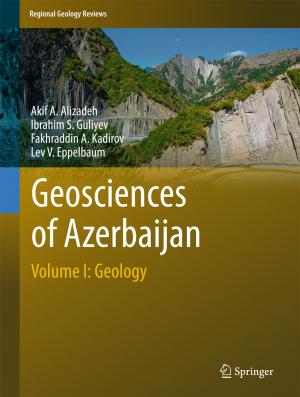Self-Organization of Hot Plasmas
The Canonical Profile Transport Model
Nonfiction, Science & Nature, Science, Physics, Nuclear Physics, Mathematical Physics| Author: | Yu.N. Dnestrovskij | ISBN: | 9783319068022 |
| Publisher: | Springer International Publishing | Publication: | July 8, 2014 |
| Imprint: | Springer | Language: | English |
| Author: | Yu.N. Dnestrovskij |
| ISBN: | 9783319068022 |
| Publisher: | Springer International Publishing |
| Publication: | July 8, 2014 |
| Imprint: | Springer |
| Language: | English |
In this monograph the author presents the Canonical Profile Transport Model or CPTM as a rather general mathematical framework to simulate plasma discharges.
The description of hot plasmas in a magnetic fusion device is a very challenging task and many plasma properties still lack a physical explanation. One important property is plasma self-organization.
It is very well known from experiments that the radial profile of the plasma pressure and temperature remains rather unaffected by changes of the deposited power or plasma density. The attractiveness of the CPTM is that it includes the effect of self-organization in the mathematical model without having to recur to particular physical mechanisms.
The CPTM model contains one dimensional transport equations for ion and electron temperatures, plasma density and toroidal rotation velocity. These equations are well established and in fact are essentially a reformulation the laws of energy, particle and momentum conservation. But the expressions for the energy and particle fluxes, including certain critical gradients, are new. These critical gradients can be determined using the concept of canonical profiles for the first time formulated in great detail in the book. This concept represents a totally new approach to the description of transport in plasmas. Mathematically, the canonical profiles are formulated as a variational problem. To describe the temporal evolution of the plasma profiles, the Euler equation defining the canonical profiles is solved together with the transport equations at each time step. The author shows that in this way it is possible to describe very different operational scenarios in tokamaks (L-Mode, H-Mode, Advanced Modes, Radiating Improved Modes etc…), using one unique principle.
The author illustrates the application of this principle to the simulation of plasmas on leading tokamak devices in the world (JET, MAST, T-10, DIII-D, ASDEX-U, JT-60U). In all cases the small differences between the calculated profiles for the ion and electron temperatures and the experimental is rather confirm the validity of the CPTM. In addition, the model also describes the temperature and density pedestals in the H-mode and non steady-state regimes with current and density ramp up. The proposed model therefore provides a very useful mathematical tool for the analysis of experimental results and for the prediction of plasma parameters in future experiments.
In this monograph the author presents the Canonical Profile Transport Model or CPTM as a rather general mathematical framework to simulate plasma discharges.
The description of hot plasmas in a magnetic fusion device is a very challenging task and many plasma properties still lack a physical explanation. One important property is plasma self-organization.
It is very well known from experiments that the radial profile of the plasma pressure and temperature remains rather unaffected by changes of the deposited power or plasma density. The attractiveness of the CPTM is that it includes the effect of self-organization in the mathematical model without having to recur to particular physical mechanisms.
The CPTM model contains one dimensional transport equations for ion and electron temperatures, plasma density and toroidal rotation velocity. These equations are well established and in fact are essentially a reformulation the laws of energy, particle and momentum conservation. But the expressions for the energy and particle fluxes, including certain critical gradients, are new. These critical gradients can be determined using the concept of canonical profiles for the first time formulated in great detail in the book. This concept represents a totally new approach to the description of transport in plasmas. Mathematically, the canonical profiles are formulated as a variational problem. To describe the temporal evolution of the plasma profiles, the Euler equation defining the canonical profiles is solved together with the transport equations at each time step. The author shows that in this way it is possible to describe very different operational scenarios in tokamaks (L-Mode, H-Mode, Advanced Modes, Radiating Improved Modes etc…), using one unique principle.
The author illustrates the application of this principle to the simulation of plasmas on leading tokamak devices in the world (JET, MAST, T-10, DIII-D, ASDEX-U, JT-60U). In all cases the small differences between the calculated profiles for the ion and electron temperatures and the experimental is rather confirm the validity of the CPTM. In addition, the model also describes the temperature and density pedestals in the H-mode and non steady-state regimes with current and density ramp up. The proposed model therefore provides a very useful mathematical tool for the analysis of experimental results and for the prediction of plasma parameters in future experiments.















